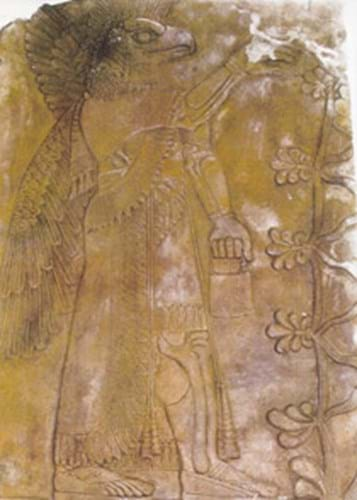
Now, however, as ATG columnist Richard Falkiner can reveal, it was trade specialists who raised the alarm after the British Museum had enthusiastically endorsed examples of Greenhalgh's work as genuine, unwittingly giving him and his family the verification they sought to pursue their fraud.
Mr Falkiner, who chairs the antiquities vetting committees at both the Grosvenor House and Olympia fairs, and is consultant to auction houses, dealers and collectors, first came across one of the Greenhalgh fakes in early 2006 on a visit to Bonhams, where he advises the antiquities department.
The prosecution in the Greenhalgh case reported how, having examined three reliefs delivered to them on November 15, 2005 by faker Shaun Greenhalgh's father George, the British Museum had concluded that they were genuine.
In a letter to Greenhalgh senior dated the following day, the BM confirmed that all the reliefs were Assyrian and from Nineveh. The museum added that they were interested in acquiring one of them, a stone relief showing a soldier and horses with cuneiform writing, which matched a drawing by A.H. Layard in the BM collection. The other two were later collected and taken to Bonhams for sale.
It was then that Bonhams' antiquities department showed one of the submitted reliefs to Mr Falkiner. It was accompanied by a vague provenance linking it to a catalogued sale at Silverton Park near Exeter in December 1892. He was also shown the BM letter verifying the relief as dating from 883-859BC and coming from Nimrud. A further letter from the British Museum described the relief as "a superb example of Assyrian art".
"I took one look at the relief and said 'don't make me laugh'," Mr Falkiner told ATG. "It was an obvious fake. It was far too freshly cut, was made of the wrong stone and was stylistically wrong for the period."
At the time though, Mr Falkiner and Bonhams' head of antiquities, Chantelle Waddingham, did not know whether it was a 19th century fake or a modern one, so they took it to the British Museum to see if there was anything similar from the 19th century stored in the archives there.
There they were told about the relief the museum had decided to buy because it matched the Layard drawing.
Mr Falkiner and Ms Waddingham were suspicious of the coincidence and queried whether the relief could be a fake created to match the drawing, which had been published in detail in a book in 1991.
According to prosecution papers in the case, it was only then that the British Museum explored this possibility and found that their relief had a mistake in the cuneiform and the harness depicted on the horses was of a modern design, not the traditional Assyrian type.
From there the Greenhalghs' web of fraud and deceit started to unravel, culminating in their arrest following the exposure of the fake Armana princess which Bolton Museum had acquired for £440,000 after the British Museum and Christie's had verified it in 2003.
Mr Falkiner said that he decided to make the revelations public because he was unhappy that, far from being credited with their contribution to exposing the fraud, Bonhams and the trade in general had been criticised in the press for helping put fakes in circulation.
"People need to understand that trade specialists have a much wider experience than museum specialists because they deal with a far wider range of objects and fresh things pass through their hands all the time," he said. "As this case shows, auction houses play a key role in the detection of fakes and forgeries."
But he reserved his greatest criticism for the Greenhalghs themselves.
"This is not just a matter of greed. The Greenhalghs have made it far more difficult for museums to approach the Art Fund and other bodies for funding, because those who have fallen foul of the fakes will have had their credibility dented."
The full range of fakes created by Shaun Greenhalgh may never be known but, as well as antiquities, he is known to have produced items as varied as paintings imitating the work of Colourist Samuel Peploe, and the so-called Eadred Reliquary, a small silver object containing a piece of wood thought to be a fragment of the True Cross.
The British Museum agreed to talk to ATG on the matter, but despite a number of attempts to obtain a statement from them, none was forthcoming at the time of going to press.
By Ivan Macquisten




